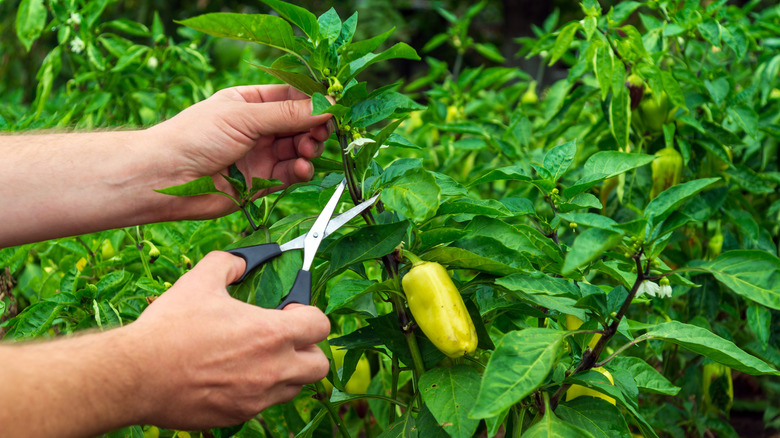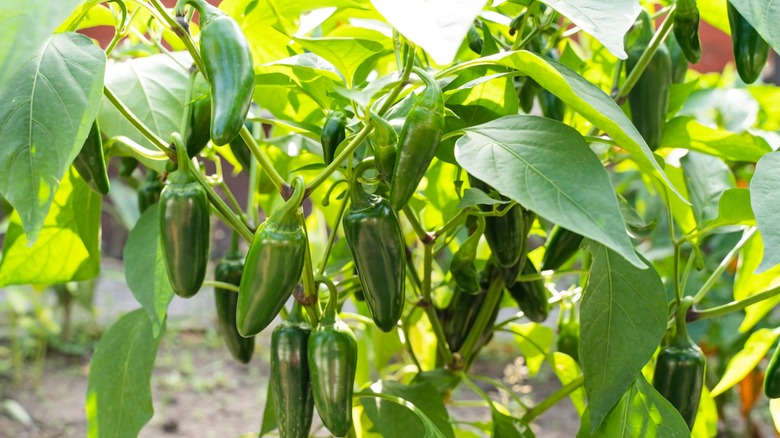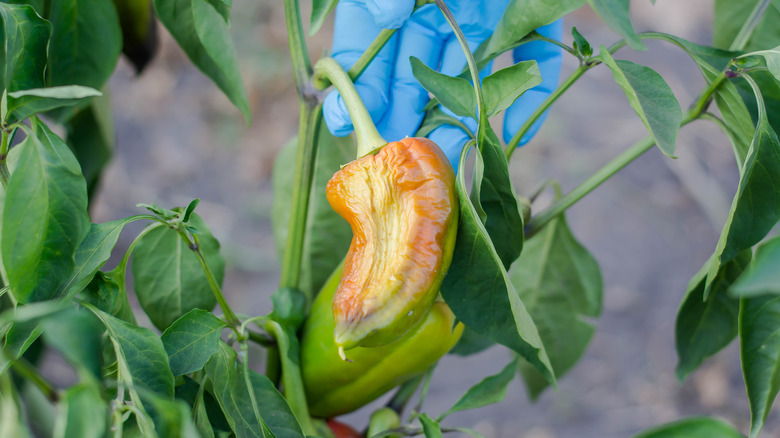Mistakes To Avoid When Topping Your Pepper Plants
To top or not to top. That is the question. Well, at least when it comes to pepper plants. There are many strong opinions on this subject and even a fair amount of controversy. The confusion about topping pepper plants (including how to avoid common mistakes when growing peppers) boils down to the fact that there are several considerations. Where you live, the types of peppers you are growing, and their size can all affect whether topping your plants is helpful or a mistake.
Topping peppers is the process of clipping off the topmost growth. After the top is removed, the plant directs its energy toward growing more outward branches, creating a fuller, bushier plant potentially capable of producing more fruits. Some types of peppers in certain climates respond well to this gardening practice and will reward you with a larger harvest throughout the season. However, topping other varieties of peppers and those grown areas with short seasons may leave you without healthy plants or a harvest.
When topping pepper plants is helpful
Pepper plants that produce smaller fruits benefit from topping because the lateral branches can support the weight. Since larger types of peppers — like bells — weigh more, they need strong branches for each fruit. Jalapenos, lunchbox peppers, and the plants of other small varieties can reward you with loads of extra peppers on each of those side branches without the weight becoming overwhelming.
Topping peppers in warmer regions can also give you a larger harvest because of the longer growing season. Topping pepper plants will delay your first harvest since they will divert their energy toward growing lateral branches, but if you have plenty of hot weather ahead, you will be rewarded with a significantly larger harvest throughout the growing season. If you live in a warm area, it's really up to you to decide if it's worth the wait. One option is to top half your plants, especially if you plan on canning. This way, you still get some early peppers as well as a bumper crop later in the year.
When to leave your plants alone
Topping pepper plants must be done before they mature. Do not prune back your pepper plants if they are taller than 24 inches. After they reach this point, they are unlikely to divert that growing energy to side branches, and you'll end up with a stunted plant that produces fewer peppers.
As we mentioned, topping peppers is not recommended for pepper plants that produce large, heavy fruits like bells or poblanos. These plants grow naturally in a shape and size to support those big, tasty pepper varieties, so it's best to leave them alone. These large peppers are also more prone to sun scald, so removing any top leaves could cause damage to the fruits. You may also lose a significant amount of your harvest if you live in a northern region with a short growing season. Since topping delays the production of fruit, you will lose precious growing time during the ideal growing weather.


